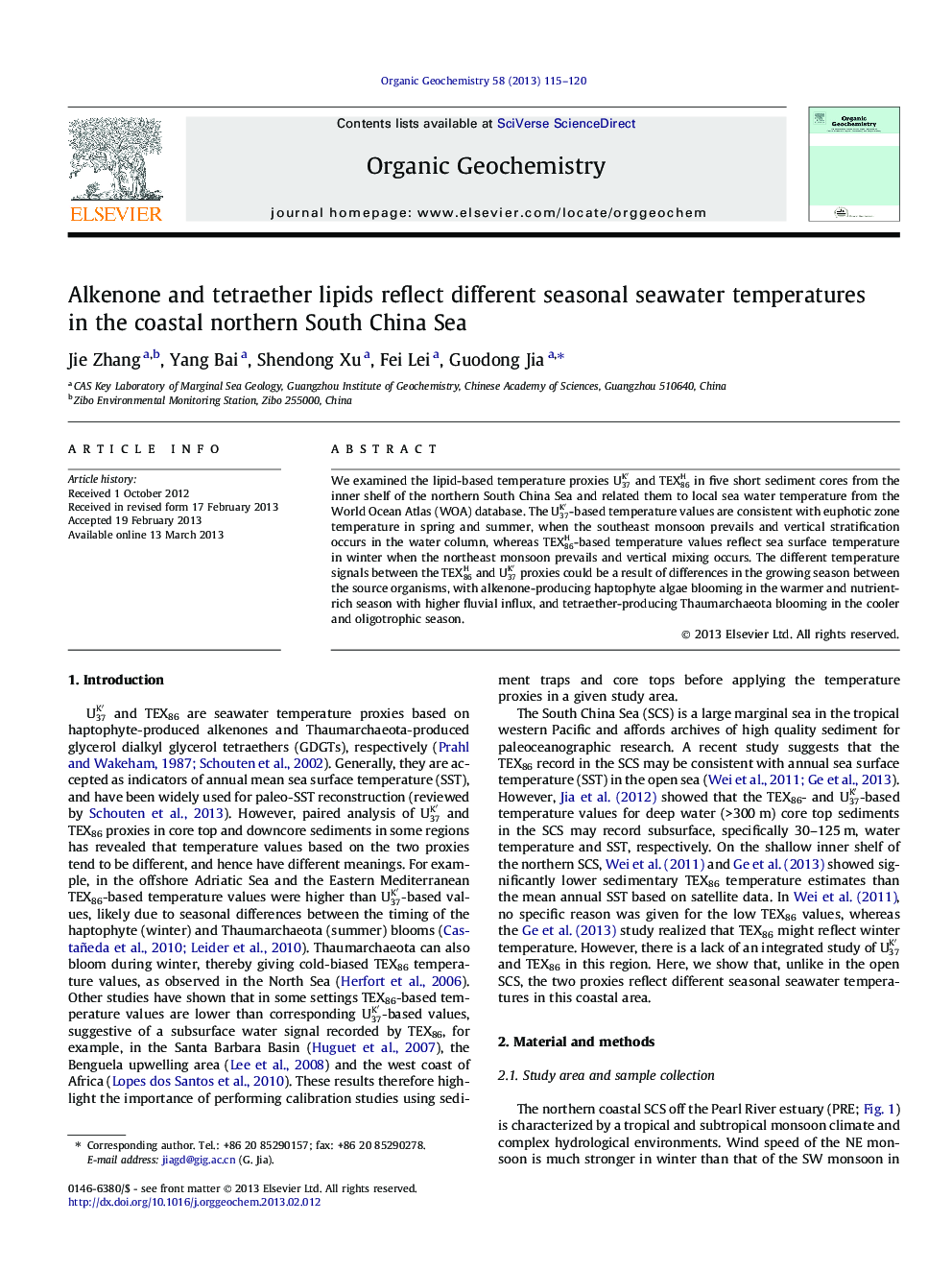| Article ID | Journal | Published Year | Pages | File Type |
|---|---|---|---|---|
| 5162736 | Organic Geochemistry | 2013 | 6 Pages |
Abstract
We examined the lipid-based temperature proxies U37Kâ² and TEX86H in five short sediment cores from the inner shelf of the northern South China Sea and related them to local sea water temperature from the World Ocean Atlas (WOA) database. The U37Kâ²-based temperature values are consistent with euphotic zone temperature in spring and summer, when the southeast monsoon prevails and vertical stratification occurs in the water column, whereas TEX86H-based temperature values reflect sea surface temperature in winter when the northeast monsoon prevails and vertical mixing occurs. The different temperature signals between the TEX86H and U37Kâ² proxies could be a result of differences in the growing season between the source organisms, with alkenone-producing haptophyte algae blooming in the warmer and nutrient-rich season with higher fluvial influx, and tetraether-producing Thaumarchaeota blooming in the cooler and oligotrophic season.
Related Topics
Physical Sciences and Engineering
Chemistry
Organic Chemistry
Authors
Jie Zhang, Yang Bai, Shendong Xu, Fei Lei, Guodong Jia,
